
by Matthew Orwat | Aug 20, 2018
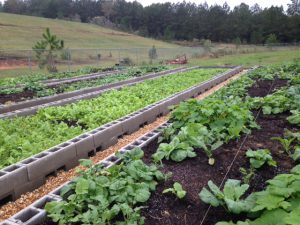 The heat and humidity of August is upon us, the cool of fall seems very far away, but is it? Believe it or not, now is the time to start planning fall vegetable gardens.
The heat and humidity of August is upon us, the cool of fall seems very far away, but is it? Believe it or not, now is the time to start planning fall vegetable gardens.
One of the most popular fall vegetables throughout the lower southern states are greens. There are old stand-bys such as cabbage, mustard, turnip and collard, but also more novel selections such as kale, and rainbow Swiss chard. One technique to extend the cropping season of collards and kale, is harvesting only lower leaves while allowing plants to continue to grow, instead of harvesting entire plants. If several plants of each are planted, there will be enough for a family to have a continuous supply of greens through the season.
Most greens prefer a pH of 6.0 to 6.5, but will tolerate pH in the range of 5.5 to 7.0. If pH is too low, the rate of dolomitic per hundred square feet to raise pH one point is 2-3 lbs. Dolomitic lime must be added at least two months before planting to be effective. Greens may be fertilized with a variety of products from compost (at the rate of 20 lbs. per 100 sq. ft.) to 10-10-10 (at the rate of 2-3 lbs. per 100 sq. ft.) balanced fertilizer with micronutrients. Two to three light repeat applications in the soil at the leaf’s edge may be warranted if plants show a need.
Starting in late August, if the weather is not blisteringly hot, collards may be started by direct seeding. If hot days are excessive, it may be necessary to drop a shade cloth on young plants until weather cools. This will improve development in the event of extended heat in early September. It is also necessary to water regularly and thoroughly while making sure plants are well-drained.
In mid-September, kale, Swiss chard, turnip greens, mustard greens and cabbage may be planted. It is often an advantage to stagger plantings from September through December to extend the season.
Greens can be planted by either direct seeding or transplanting. I have found that if starting greens when it is still very warm, direct seeding is desirable since more transplant shock occurs when temperatures are higher. When it is cooler, transplanting may be more advantageous since the plants will be more developed and ready to harvest sooner.
Greens make a delightful addition to any meal so why not grow your own and experiment with novel types that cannot be found in store shelves. The video below details some novel techniques used to maximize greens’ harvest. Happy Gardening.
Video: Greens and Lettuce for Fall Gardening
Florida Vegetable Gardening Guide
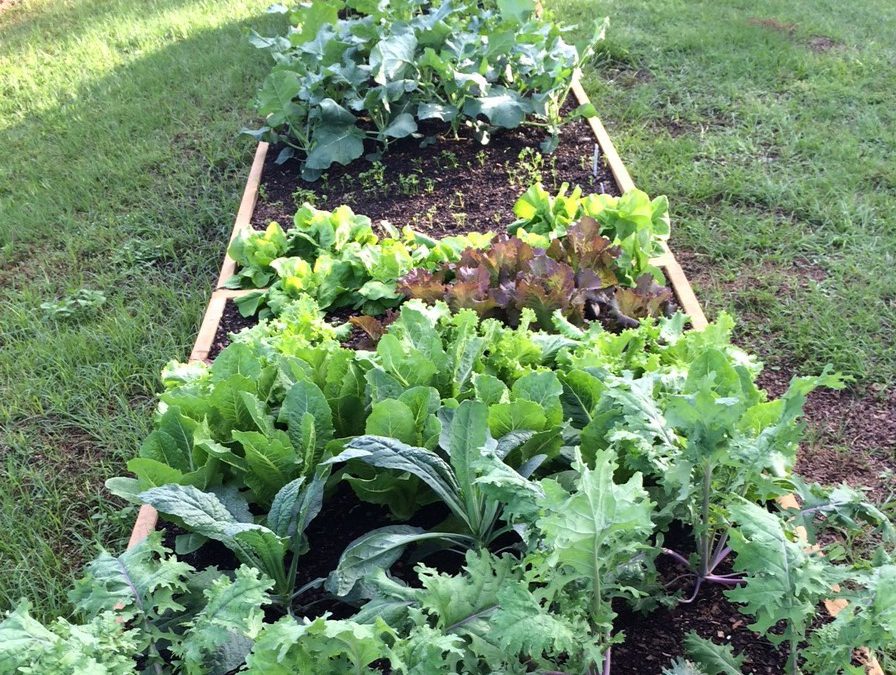
by Molly Jameson | Sep 16, 2016
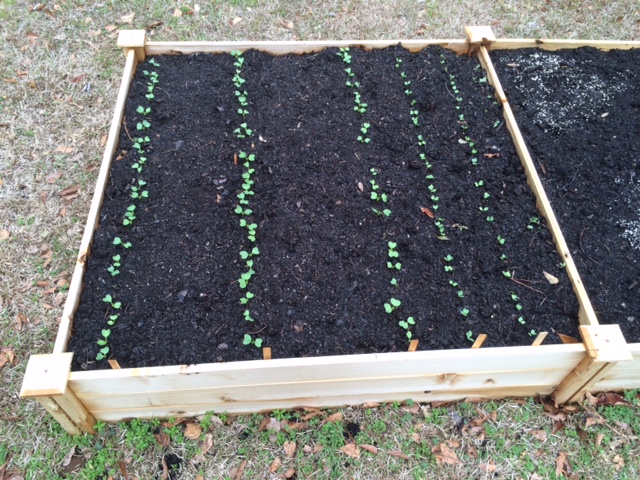
Direct seed root crops and many leafy greens, such as arugula and spinach. Photo by Molly Jameson.
Fall is fast approaching, and that means my favorite season for gardening has arrived! September is the month we get to start all of our fall favorites. For me, this means starting lettuce, kale, broccoli, and collards by seed in flats indoors. I use full-spectrum fluorescent bulbs, which mimics natural sunlight. In a couple of weeks, I will direct seed arugula, carrots, mustards, spinach, Swiss chard, and turnips into my raised beds.
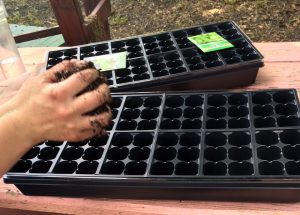
Seed brassicas and lettuce into flats. Photo by Molly Jameson.
But before I get started direct seeding, I will first need to do some garden cleanup. Sadly, this means I will need to say goodbye to my basil and okra, which are still hanging on despite the heat (and despite the hurricane!). Then it will be time to add a fresh layer of compost. Additionally, I will be adding worm castings, which I have been creating for my fall garden in my home worm bin all summer. There is no better feeling then growing brassicas and lettuce from seed, digging small holes, adding homemade fresh worm castings to each, and planting the eager seedlings.
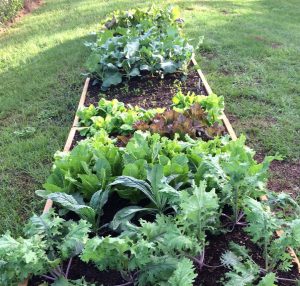
Grow a variety of greens for the fall season. Photo by Molly Jameson.
Fall is a wonderful time to garden in zone 8b – generally less pest pressure and a chance to plant hardy leafy greens that can be harvested all the way into spring. Of course, I always keep frost cloth around, in case temperatures dip below freezing for extended periods of time. In which case I will be sure to carefully cover my lettuce and Swiss chard, making sure the cloth is well secured.
I love my tomatoes, peppers, beans, and squash, but they usually involve staking and the ever imminent threat of caterpillars and intense heat. In the fall, most crops hold themselves off the ground, and I certainly cannot wait to pull on a jacket in the crisp early morning, come out to harvest kale and spinach leaves, and add them to my breakfast smoothie and veggie omelet.
For more information:
Florida Vegetable Gardening Guide
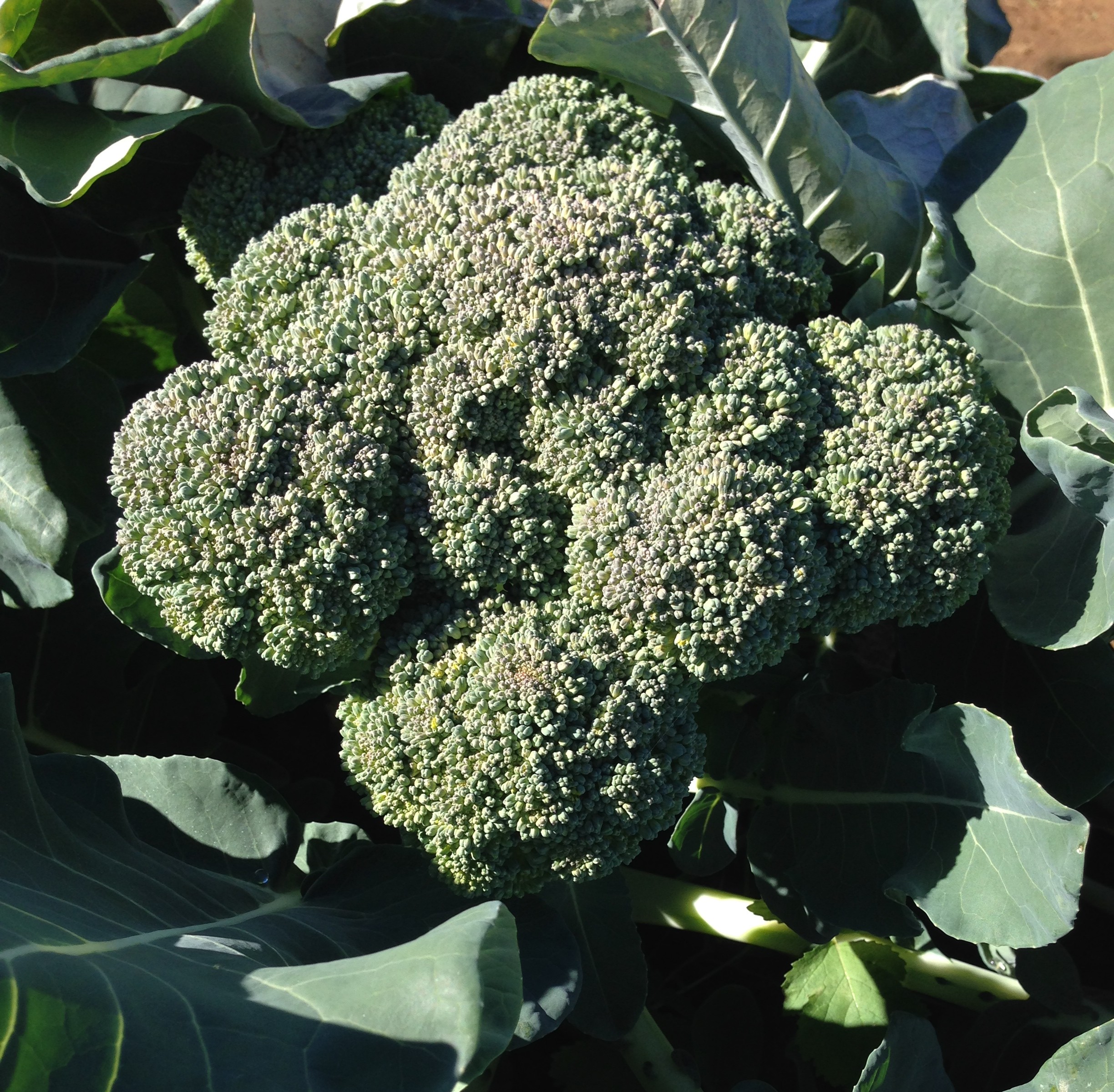
by Julie McConnell | Sep 3, 2015
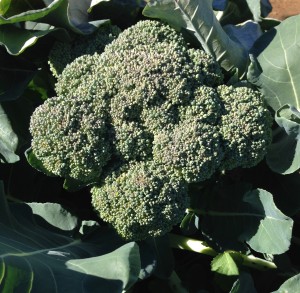
Broccoli, a popular winter vegetable. Photo by Mary Derrick, UF IFAS
As the days get shorter and temperatures decrease, it is time install your cool season vegetable garden. Many vegetables can be grown in Florida, but it is important to understand what the climatic requirements are for each crop to have the most success.
To get the most of your garden space know the recommended months for planting and the turnaround time for harvest so that you can stagger plantings or change out crops as needed.
September is the ideal time to plant cabbage, beets, kale, lettuce, mustard greens, onions, and radishes. After the New Year some options include eggplant, potatoes, English peas, and turnips.
Many gardeners start their tomatoes and peppers as early as February, but they are frost sensitive and early planting carries some risk of cold damage.
If you are interested in learning more about fall vegetable gardening, join the UF/IFAS Bay County Master Gardeners on Friday, September 18th for a free vegetable gardening workshop. This class will be held at the Bay County Extension Office at 2728 E. 14th Street in Panama City. To register please call 850-784-6105 or email bay@ifas.ufl.edu. Fall-VegMG2015
For more information and a full chart of what to plant when see Florida Vegetable Gardening Guide.

 The heat and humidity of August is upon us, the cool of fall seems very far away, but is it? Believe it or not, now is the time to start planning fall vegetable gardens.
The heat and humidity of August is upon us, the cool of fall seems very far away, but is it? Believe it or not, now is the time to start planning fall vegetable gardens.





